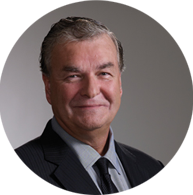Blog
What to Know About Athetoid Hemiplegic Cerebral Palsy

Also known as dyskinetic hemiplegic cerebral palsy, athetoid hemiplegic cerebral palsy is a type of movement disorder that affects only one side of the body. Resulting from damage to the developing brain, this condition causes involuntary movements such as trembling, twisting, and grimacing, making it difficult for a patient to live a normal life. While it isn’t as prevalent as spastic cerebral palsy, athetoid hemiplegic cerebral palsy is more common than ataxic cerebral palsy.
Causes of Athetoid Hemiplegic Cerebral Palsy
Athetoid hemiplegic cerebral palsy occurs because of damage to the basal ganglia or cerebellum. Basal ganglia refer to a group of nuclei located in the cerebral cortex, which is the outermost layer surrounding the brain. The cerebral cortex is the part of the brain that helps regulate motor control. Other than affecting thinking and learning abilities, damaged basal ganglia also hinders motor function development and causes involuntary movements.
The cerebellum, on the other hand, facilitates coordination and precision of body movements, which are vital to balance and fine motor skills. When this part of the brain is damaged, coordination and balance become more difficult. Damage to the cerebellum can also undermine cognitive functions such as concentration and communication and result in co-occurring disorders such as epilepsy and autism.
A variety of factors can cause damage to the basal ganglia or cerebellum, including:
- Meningitis and other infections
- Lack of oxygen supply to the developing brain, both before and during labor and delivery
- Trauma to the developing brain
- Severe infantile jaundice
Certain risk factors may make a person more susceptible to brain injuries that lead to athetoid hemiplegic cerebral palsy. Generally, these risk factors are the same as those that increase the chances of other types of cerebral palsy, such as:
- Premature birth
- Severe vascular disorders in the placenta
Symptoms of Athetoid Hemiplegic Cerebral Palsy
The symptoms of athetoid hemiplegic cerebral palsy happen on one side of the body and vary depending on the severity of the condition. These symptoms occur because of overly low or high muscle tone, which may differ on a daily basis. Low muscle tone causes the muscles to become too loose or relaxed, leading to problems such as difficulty sitting up. High muscle tone, on the other hand, results in stiffness and body movements. The most common symptoms of athetoid hemiplegic cerebral palsy include:
- Involuntary movement
- Poor posture
- Unsteadiness
- Tremors
- Twisting of the torso
- Grimacing or drooling
- Abrupt movements
- Slow and writhing movements
Treatment for Athetoid Hemiplegic Cerebral Palsy
Similar to all types of cerebral palsy, athetoid hemiplegic cerebral palsy can’t be cured. Nonetheless, children who have this condition often grow up to live healthy and meaningful lives as adults. Treatment for cerebral palsy comes in a variety of methods that aim to help patients become more confident and effective in their abilities, resulting in greater independence in their daily lives. Some of the treatment methods for athetoid hemiplegic cerebral palsy include:
- Physical therapy: Generally, physical therapy for athetoid hemiplegic cerebral palsy focuses on improving overall mobility. It uses a variety of exercises to help patients gain muscle strength so that they can hold their posture and keep the body in an upright and steady position. Additionally, the therapy usually involves exercising the muscles of the face and tongue to control grimacing and drooling, which are common in children with this condition.
- Occupational therapy: Occupational therapy can help children who are suffering from athetoid hemiplegic cerebral palsy play and learn independently, form relationships, and perform daily activities with increased mobility and confidence. This type of therapy typically includes exercises such as stretching with resistive equipment and functional and engaging activities.
- Speech therapy: Speech therapy can help alleviate speaking, eating, and breathing issues that commonly occur in cerebral palsy patients. It can help children with athetoid hemiplegic cerebral palsy improve their ability to control their face and tongue muscles and do their daily tasks more easily.
- Medication: The types of medications prescribed for athetoid cerebral palsy are mostly used to treat secondary conditions resulting from damage to the developing brain. For instance, anticonvulsants are prescribed for patients who are experiencing seizures and acid reflux medications are used for those with weak gastroesophageal muscles. There are also medications for controlling drooling and incontinence in athetoid hemiplegic cerebral palsy patients.
- Surgery: Although it isn’t a common treatment method for athetoid hemiplegic cerebral palsy, surgery may sometimes be used to correct joint dislocations or deformities that result from high muscle tone.
It’s important to know that athetoid hemiplegic cerebral palsy may occur because of medical malpractice. If you think that medical malpractice may be the cause of your child’s CP, you may be entitled to compensation. Janet, Janet & Suggs, LLC has helped more than 30,000 families across the United States learn about their rights and options in medical negligence cases. Contact us today to see how we can support you.

Giles H. Manley, M.D., J.D., F.A.C.O.G. | CPFN Medical Advisor
Board-Certified OBGYN | Medical Malpractice Attorney
Dr. Manley has delivered over 2,000 babies and uses his wealth of medical knowledge to uncover medical errors that were missed by others (keep in mind most CP cases involve errors committed at or around the time of birth). READ FULL BIO
